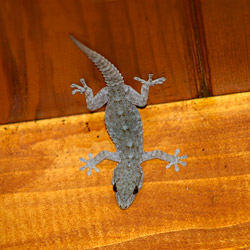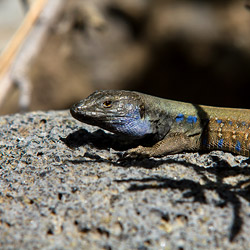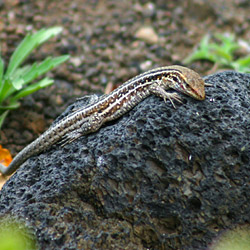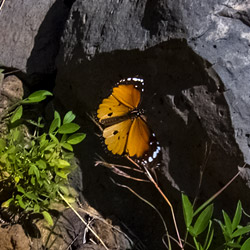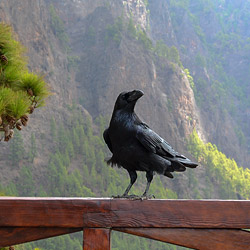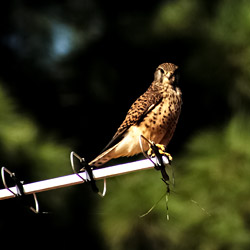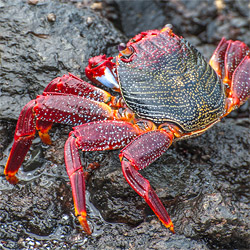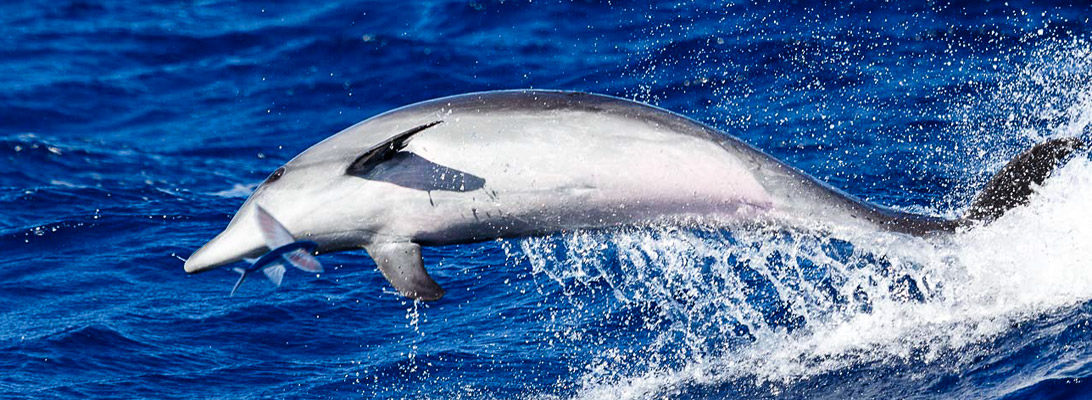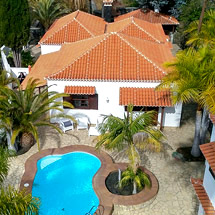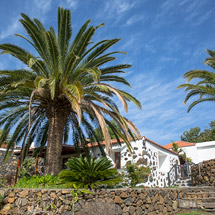Nature
The trade winds regularly carry clouds that moisten the laurel forests and pine forests on the east side. The Canary Islands Pine milks the clouds with its long, thin needles.
The Caldera de Taburiente, the heart of La Palma, is one of the largest erosion cauldrons in the world. Numerous springs rise in its interior, pines and other trees offer a lush green vegetation. The highest elevation of La Palma with 2.426 meters is the Roque de los Muchachos.
The north of La Palma is characterized by deep gorges (barrancos) and mountain streams. Here you can still experience wild nature while hiking. The southern tip, with its lava fields (malpaís - "bad land") offers a memorable contrast to this. On La Palma, there are different vegetation zones depending on the altitude: from the coastal vegetation (up to 500 meters) over the Laurel forest (500-1,200 meters) and the Fayal Brezal vegetation (1,000-1,500 meters) in the northeast to the pine forests (up to 2,000 meters) and alpine plant growth (from 2,000 meters onwards) on the slopes of Caldera.
Wildlife
Compared to the flora, the fauna of La Palma offers less diversity. There are almost no dangerous animals on La Palma. There are, however, many birds to be seen on La Palma, such as the endemic caldera crow Graja, buzzards, falcons, kites, sparrow hawks, pigeons or canaries. Also characteristic are the numerous lizards (lagartos) and geckos as well as the native bat. Geckos are, by the way, very useful and completely harmless house inhabitants.
The only poisonous animal on La Palma is the centipede (ciempies), whose bite can be dangerous for children, but against which drugs are available at the pharmacy. There are two types of centipedes; Those that can be encountered randomly, because they are found near houses, are relatively harmless. The more poisonous ones live under stones in the fields and in the wild. They are rarely seen and then, mostly only by the farmers who cultivate the fields.
The rabbits in the wilderness of the Caldera have been abandoned by humans. Although there are many butterflies and other insects on La Palma, there are few mosquitoes.
Insects
Unpleasant contemporaries are, for example, cockroaches which occur more frequently in some years than in others. The same applies to ants: the less rubbish and open food left on the table or terrace, the less trouble you will have with insects. If you have a plague of insects in your holiday home, please inform the local administrator immediately. On La Palma, when the weather is damp, so-called wireworms appear at irregular intervals (similar to the plagues of ladybirds in some places): small black, harmless little animals that crawl around everywhere. They are harmless but can be a nuisance in everyday life.
Fish and marine mammals
More exciting is the wildlife in the fish-rich waters around La Palma, which can be seen easily on boat or diving trips. In addition to the rare pilot whales, dolphins, blue and hammerhead sharks, which can be seen further out on the sea, tunas, moray eels, parrotfish, hake, squid, crabs and lobsters and many other sea creatures can be found in the waters.







